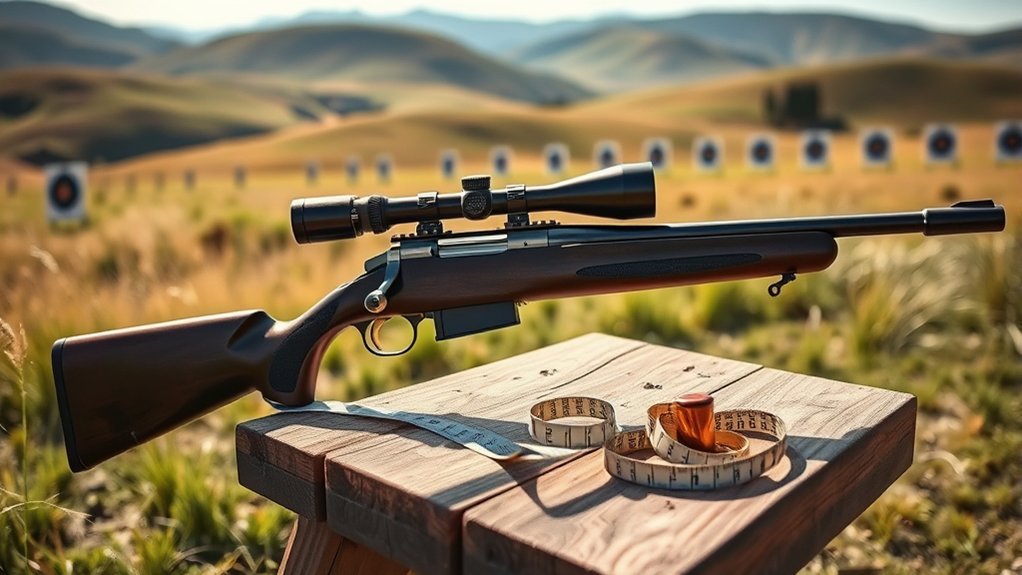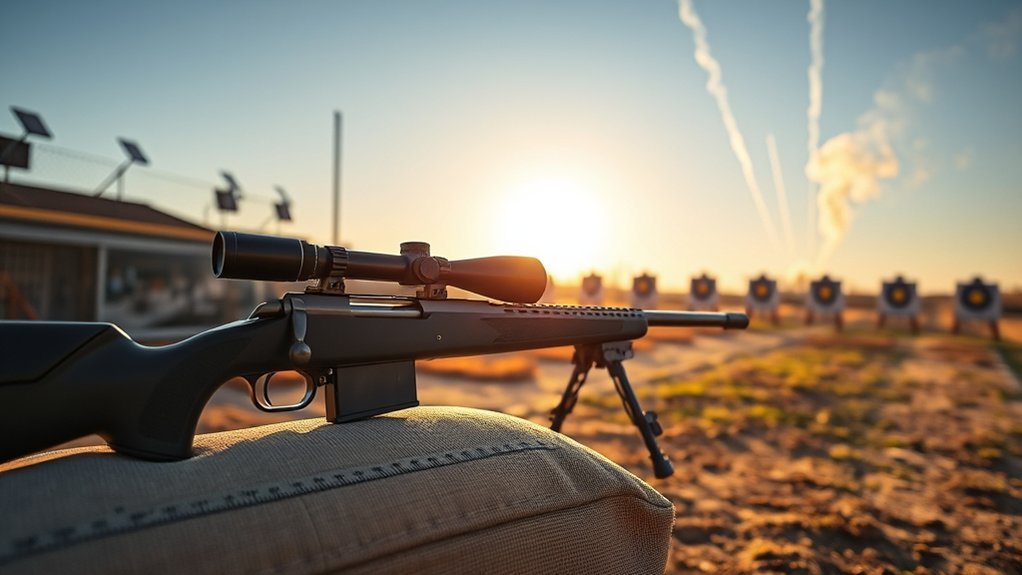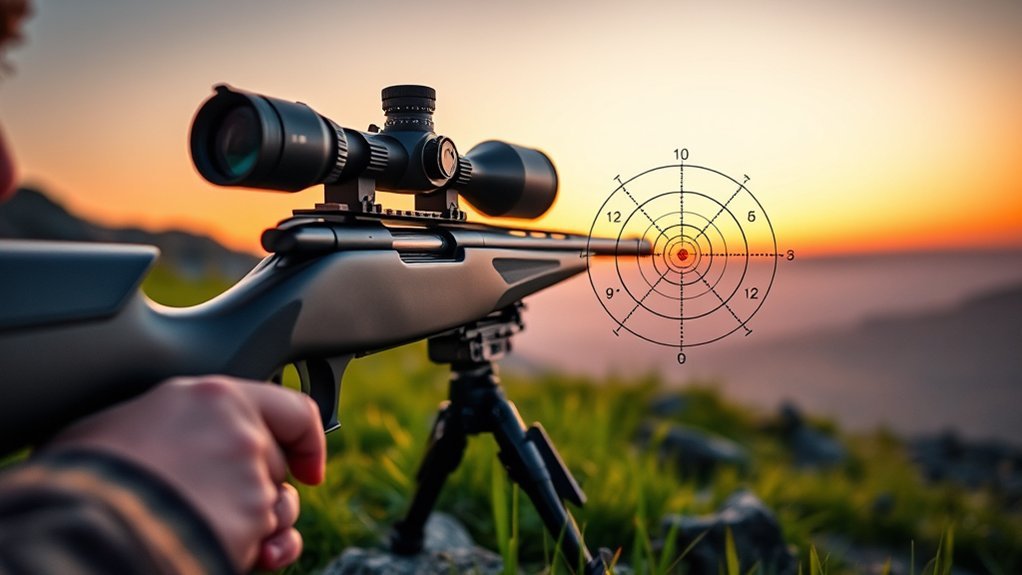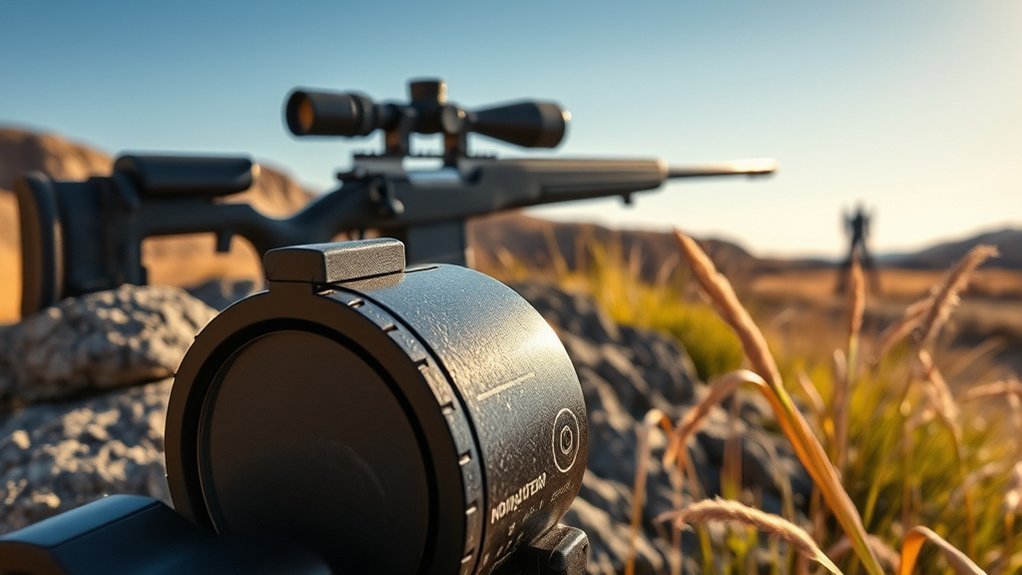When you shoot at long distances, understanding bullet drop and holdover becomes essential. Bullet drop, influenced by gravity and projectile velocity, can greatly affect your accuracy. To compensate, you need to apply holdover, adjusting your aim accordingly. Mastering these concepts can profoundly enhance your shooting precision. But how do you calculate the necessary adjustments effectively? Let’s explore the key factors that contribute to your success in long-range shooting.
Understanding Bullet Drop: The Basics

When you fire a bullet, gravity immediately begins to affect its trajectory, causing it to drop from the straight line of its initial path. This drop occurs due to the constant acceleration of gravity, which exerts a downward force on the bullet as it travels. The bullet’s velocity, angle of elevation, and distance to the target all influence the degree of drop. As the bullet moves forward, it loses altitude relative to its starting point, creating a parabolic flight path. Understanding this drop is essential for accurate shooting; you must account for it by adjusting your aim based on distance and ballistic characteristics. Mastering these fundamentals enhances your shooting precision and effectiveness in various conditions.
The Physics Behind Bullet Drop

Understanding the physics behind bullet drop is essential for accurate shooting. Bullet drop occurs due to gravitational forces acting on the projectile as it travels through the air. The initial velocity, angle of trajectory, and distance to the target all influence how much drop you’ll experience.
| Factor | Impact on Bullet Drop |
|---|---|
| Initial Velocity | Higher velocity reduces drop |
| Trajectory Angle | Steeper angles increase drop |
| Distance to Target | Greater distance increases drop |
What Is Holdover and How to Use It

Holdover is a critical concept in shooting that allows you to compensate for bullet drop when aiming at targets at varying distances. To effectively use holdover, you need to understand how your specific ammunition behaves over distance. Start by determining the distance to your target and recognizing the bullet’s drop at that range. Instead of adjusting your sights, you’ll aim above the target, aligning your reticle with a point that compensates for that drop. Familiarize yourself with your rifle’s ballistics to identify the appropriate holdover points on your reticle. Practice this technique regularly to build confidence and accuracy. Ultimately, mastering holdover enables you to make precise shots, even when engaging targets far beyond your rifle’s zeroed range.
Calculating Bullet Drop and Holdover
To accurately compensate for bullet drop, calculating both bullet drop and holdover requires a solid grasp of your ammunition’s ballistic profile. Begin with determining the bullet’s velocity and ballistic coefficient, which allows you to understand how it behaves over distance. Use ballistic calculators or tables to estimate drop at varying distances, converting this data into holdover adjustments for your sights. For instance, if your bullet drops 10 inches at 300 yards, you need to adjust your aim accordingly. Remember, holdover is the vertical offset you apply to your reticle based on the calculated drop. Consistent practice and familiarity with your specific load will improve your accuracy, ensuring you hit your target effectively at various ranges.
Adjusting for Environmental Factors
While you may have mastered bullet drop calculations, environmental factors can greatly impact your shot’s trajectory and accuracy. To guarantee consistent performance, you need to adjust for these variables:
Mastering bullet drop is just the start; environmental factors play a crucial role in achieving accuracy. Adjust for them to ensure consistent performance.
- Wind: Crosswinds can deflect your bullet off course, requiring compensation based on wind speed and direction.
- Temperature: Warmer air is less dense, which can increase bullet velocity and affect drop.
- Altitude: Higher elevations reduce air density, impacting both trajectory and bullet drop.
- Humidity: Increased moisture in the air can also affect bullet performance, altering trajectory slightly.
Practical Tips for Long-Range Shooting
To achieve accuracy in long-range shooting, you need to grasp ballistic calculations and their impact on your shot. Effectively utilizing rangefinders is essential for determining distance, while adjusting for wind conditions can greatly affect bullet trajectory. These practical tips will enhance your shooting precision and overall performance.
Understand Ballistic Calculations
Understanding ballistic calculations is essential for effective long-range shooting, as even minor miscalculations can lead to significant deviations in accuracy. To enhance your shooting precision, focus on the following key factors:
- Bullet Weight and Type: Different bullets have unique ballistic coefficients affecting their drop.
- Velocity: The speed of your bullet influences how it travels through the air and its drop over distance.
- Environmental Conditions: Wind, humidity, and temperature can alter the bullet’s path.
- Elevation and Distance: Changes in altitude and the range to your target directly impact drop calculations.
Utilize Rangefinders Effectively
Rangefinders are invaluable tools for long-range shooting, as they provide precise distance measurements that inform your ballistic calculations. To utilize them effectively, first, verify your rangefinder is calibrated and functioning properly. Familiarize yourself with its features, such as angle compensation, which can greatly affect your shot. When measuring distances, hold the device steady to avoid errors caused by movement. Use a consistent shooting position to enhance accuracy. Remember to account for environmental factors like temperature and humidity, as they can impact the rangefinder’s performance. Finally, practice regularly with your rangefinder to develop confidence and familiarity, confirming you’re ready to make accurate, informed shots when it matters most.
Adjust for Wind Conditions
How do wind conditions affect your shot accuracy when shooting at long ranges? Wind can considerably alter bullet trajectory, causing deviations from your intended point of impact. To effectively adjust for wind, you need to analyze the conditions and apply the correct compensations. Here are some practical tips:
- Observe the Wind Direction: Use flags or natural indicators to gauge wind direction and speed.
- Calculate Wind Drift: Use ballistic calculators to determine how much wind will affect your bullet’s path.
- Adjust Your Aim: Shift your point of aim based on your wind drift calculations.
- Practice Regularly: Familiarize yourself with different wind conditions to improve your instinctive adjustments in the field.
Mastering these techniques enhances your long-range shooting accuracy.
Conclusion
So, if you thought shooting was just about pulling the trigger and hoping for the best, think again! Mastering bullet drop and holdover isn’t just a suggestion; it’s practically a rite of passage for serious marksmen. After all, who wouldn’t want to spend hours calculating where to aim, just to hit that bullseye? Embrace the art of precision, or risk becoming the punchline of your own long-range dreams. Happy shooting—just remember, gravity’s always watching!

